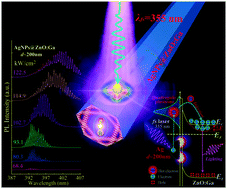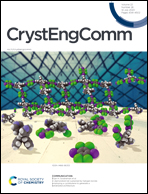Hot electron injection induced electron–hole plasma lasing in a single microwire covered by large size Ag nanoparticles
Abstract
In addition to the plasmon-mediated resonant coupling mechanism, plasmon-induced hot electron transfer can provide an alternative approach to construct high-performance optoelectronic devices for various applications, including photodetectors, photovoltaics, and molecular biology. In this work, a single Ga-doped ZnO microwire covered by large size (the diameter d ⋍ 200 nm) Ag nanoparticles (AgNP@ZnO:Ga MW) was prepared. Due to the excitation of hybrid quadrupole plasmons, ultraviolet whispering gallery mode lasing with a low threshold and significant enhancement of the optical output intensity was realized. Particularly, electron–hole plasma (EHP) lasing features, such as the redshift of the lasing band and the broadening of the spectral linewidth, could also be captured. This excellent phenomenon can be attributed to the hybrid quadrupole plasmon-induced generation and injection of hot electrons, resulting in bandgap renormalization due to the mismatch of the hybrid quadrupole plasmons and the ZnO:Ga excitons. The prompt hot electron generation and injection induced EHP-lasing characteristics can provide new possibilities for designing high-performance optoelectronic devices. More importantly, the proposed bandgap renormalization also enables the high-level engineering of the optoelectronic features by fine tuning the plasmonic behaviors.



 Please wait while we load your content...
Please wait while we load your content...